| The Essoldo,
Bethnal Green Road
was one of my very
favourite cinemas since
it was here that I saw
many films of importance
and distinction and where
I was introduced to the
glory of CinemaScope.
The cinema was built by
an unknown architect for
George Smart and named Smart’s
Picture House when it
opened in April 1913.
According to Cinema
Treasures,
the auditorium seated
865, which was separated
from a small stage
reaching back 7 feet 6
inches by a 24 feet wide proscenium.
The building was closed
in 1938 and remodeled by
the architect George
Coles. The
original tower and front
were demolished and
replaced by an Art
Deco façade, which
survives today. 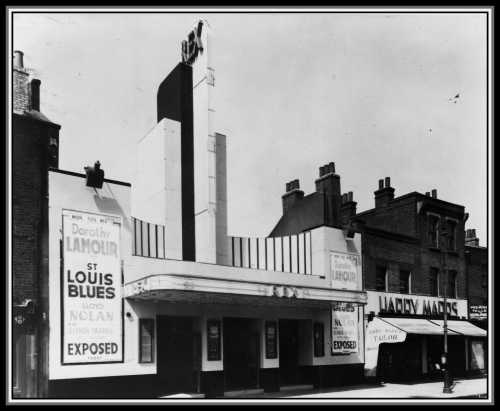
The cinema
reopened in 1938 as the Rex
and was immediately
notable for its new
exterior, which remains
impressive and quite
grand. The façade is
decorative, but without
being overly ornate. From
each end of the façade,
an attractive arcing
sweep of alternate brown
and cream pseudo
pillars in recess meets
at the foot of a tall,
slender fin-like central
tower. At one time, the
name of the cinema was
displayed in neon at its
peak. The auditorium was
also restyled in Art
Deco style with
distinctive murals on the
side walls and a stepped
ceiling together with a
long light fitting
running down the centre
towards the screen.
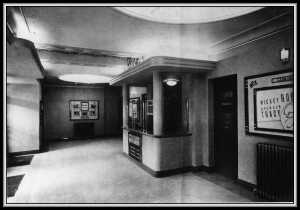 |
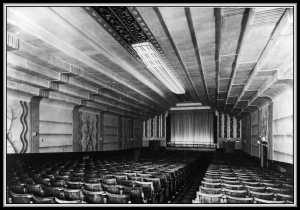 |
 |
| Foyer
& Box Office |
Auditorium
- Proscenium |
Auditorium
- Rear |
On
26th December,
1949, the cinema was
taken over by the Essoldo
chain of cinemas and
renamed after the
operators. The Essoldo
chain was once the
largest independent
cinema chain at one time
and was founded in 1930
by Solomon Sheckman as S.S.
Blyth Kinemas, Newcastle.
The company was very much
a family concern and the
name Essoldo came
from the first names of
his wife, ESther,
himself, SOLomon
and his daughter, DOrothy.
After Mr. Sheckman's
death in the late 1960's,
the circuit was
controlled by his brother
Captain Mark Sheckman.
Most Essoldo
cinemas were named for
the chain, but with an
occasional variation, as
was the case with the Empress
in Hackney.

Solomon
Sheckman & The
Essoldo, Newcastle
The Essoldo
Bethnal Green closed
as a cinema in 1964, but
soon reopened as a Bingo
Hall. I never saw
it in this incarnation
as I was busy at
college and visiting
other places other than
the East End at that
time. It is said that Mr.
Sheckman was very much
against Bingo and
no doubt would have been horrified
had he been alive to
see what was to become of
his cinema empire. The
building remained a Bingo
Hall until 1990
whereupon it closed and
was sold.
The
building is currently
owned by B.K. Frankle
& Sons, Ltd., which
employ the trading name
of Frankle
Trimmings
and is used as a place of
business and as a
warehouse. The
company was established
in 1910 as a wholesale
retailer of trimmings to
the fashion industry and
now supplies their
products to companies in
the U.K. and worldwide.
The company offers first
class service and
their customers announce
their appreciation by
saying If Frankle
Trimmings do not sell it,
then it does not exist.
The owners have
maintained the building
extremely well since its
closure as a cinema-Bingo
Hall and have been
careful to retain as many
aspects as possible of
its original grandeur during
the renovation of the façade
in 2005. I feel that
they should be commended
for their efforts.
 Out
of necessity, the
building’s entrance,
foyer and box office have
either gone or else
changed to fit the needs
of the current owners.
The front of the building
is no longer decorated
with large glass fronted
boxes once filled with photographic
stills of the current
presentation to tempt the
passing patron to come in
and escape his or her
troubles and woes for a
few hours. The enormous
studio still of Marilyn
Monroe that hung in the box
office is gone too. I
always liked that
portrait of her. It
showed her in somewhat
tormenting and defiant
pose, but nonetheless
alluring and provocative.
The photograph showed her
with head tossed back in
classic pose and with her
mouth open along with her
bright red lips formed
into a somewhat mocking
smile. I remember that
her eyes sparkled and her
teeth were perfect. She
wore a red dress cut low
to reveal a lot of
cleavage. It was
hard not to like her. The
foyer area no
longer displays
photographs and
advertisements to inform
the patrons of coming
attractions. Out
of necessity, the
building’s entrance,
foyer and box office have
either gone or else
changed to fit the needs
of the current owners.
The front of the building
is no longer decorated
with large glass fronted
boxes once filled with photographic
stills of the current
presentation to tempt the
passing patron to come in
and escape his or her
troubles and woes for a
few hours. The enormous
studio still of Marilyn
Monroe that hung in the box
office is gone too. I
always liked that
portrait of her. It
showed her in somewhat
tormenting and defiant
pose, but nonetheless
alluring and provocative.
The photograph showed her
with head tossed back in
classic pose and with her
mouth open along with her
bright red lips formed
into a somewhat mocking
smile. I remember that
her eyes sparkled and her
teeth were perfect. She
wore a red dress cut low
to reveal a lot of
cleavage. It was
hard not to like her. The
foyer area no
longer displays
photographs and
advertisements to inform
the patrons of coming
attractions.
The auditorium
is now used as a
warehouse where the
company products are
stored and as an office.
What is interesting about
the warehouse/offices is
that a number of features
of the cinema remain.
Parts of the proscenium
are still in place, as
are some features of the
central lighting
attachment. However, it
is the façade that
still reflects the
grandeur and splendour of
this one-time theatre,
and if truth-be-told,
those that knew the
cinema in its final
days, like myself,
will be quick to point
out that it is both
grander and more splendid
now, and this is thanks
to the concern and
consideration of Frankle
Trimmings.
I
would like to thank Mr.
Brian Hall and Mr. Kevin
Wheelan for their
kindness in allowing many
of their pictures to be
reproduced here.
REMINDERS
OF THE CINEMA
I
would like to thank Mr.
Howard Cohen, Mr. Harvey
Frankle and Mr. Dave
Furzer for their kindness
in allowing me to visit Frankle
Trimmings and to
photograph the
building. I would
also like to thank them
for their consideration
and time given to me
during my visit.
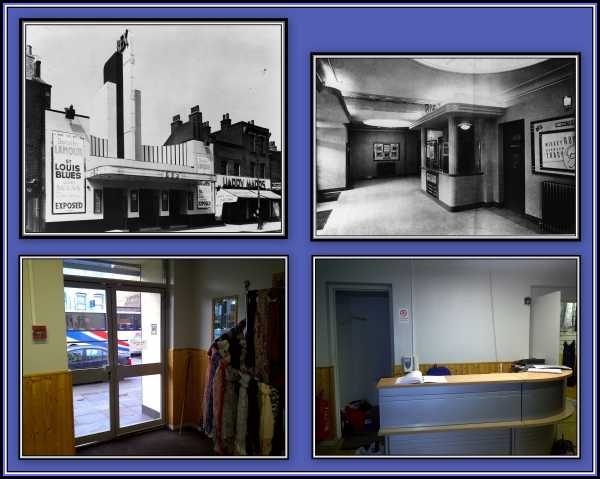
Converted
Entrance and Foyer
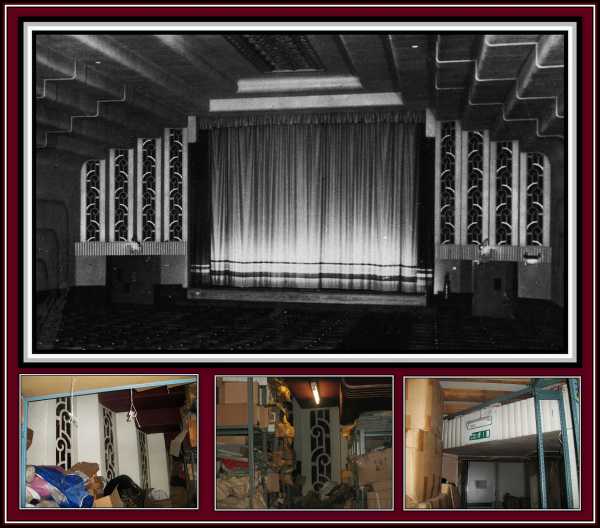
Reminders of the
Proscenium
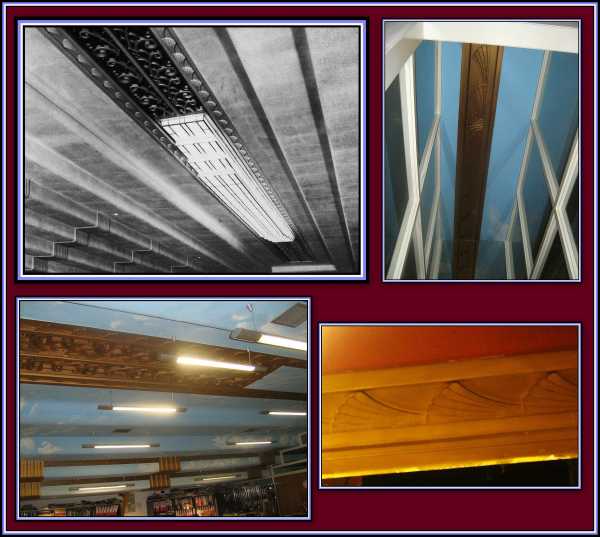
Reminders of the Central
Light Fixture
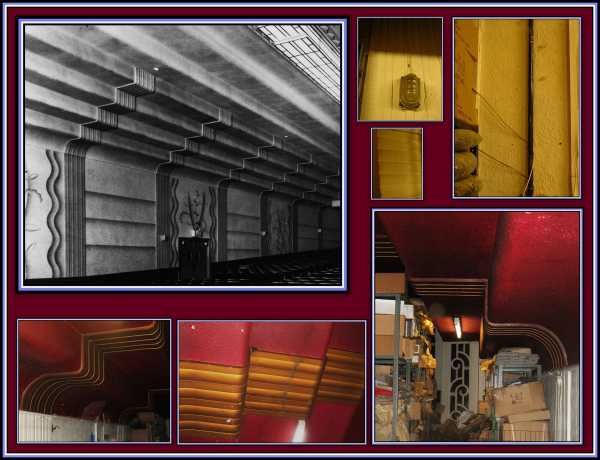
Reminders of the Ceiling
and Wall Decorations

Support found
in the Projection
Room, now office, and
part of a cinema seat
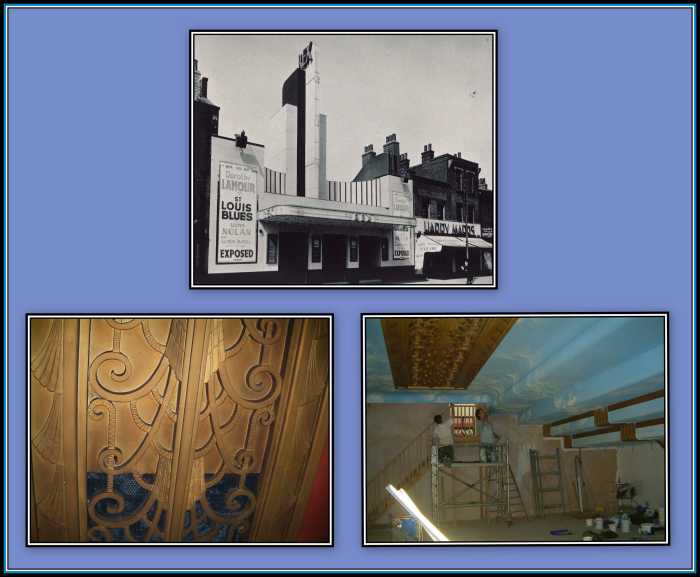
I am
grateful to Mr. Harvey
Frankle for providing the
pictures used in this
collage

Dave Furzer
|